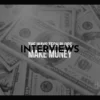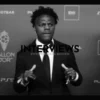Quench Your Thirst for Knowledge: Is Diving into the Beverage Biz Right for You?
Are you thinking about starting a beverage company? That is smart. People are always thirsty. Whether it’s a hot summer day or a cozy evening, drinks are essential. Is this plan mere wishful thinking? Or can you actually earn money in the beverage business? Let’s find out.
Is the Beverage Business Really That Profitable? Spoiler: It Can Be!
Is starting a beverage company truly profitable? Yes, it can be. The demand for drinks is stable. People desire hydration, caffeine, and celebratory drinks. Rain or shine, they need them. This consistent demand is a strong advantage.
Now, let’s delve into numbers. Soft drinks have solid profits. Their profit margins sit between 25% and 40%. That’s quite nice, right? Keep in mind production costs, marketing, and competition. Profit doesn’t come from just mixing sugar and water.
What about alcohol? In 2023, they had similar profit margins as non-alcoholic drinks. Gross profit margins are around 54%. The EBITDA margin rests at 0.91% and net profit margin hovers at 11.47%. Surprisingly, non-alcoholic drinks sometimes list even higher margins. Who knew water could yield such profits?
Maximizing Your Beverage Bucks: Tips of the Trade
Beverages should bring in cash. But sometimes profits leak out due to wastage, poor service, or theft. These can drain margins fast. But there are ways to fix this:
- Reduce Wastage: Pouring too much? Spoilage? Implement better management and train your staff to be exact. Every drop is valuable!
- Improve Service: Happy customers buy more. Speedy service and friendly staff lead to repeat business and bigger tips.
- Stock Security: Monitor your inventory. Prevent theft and spoilage with good storage and tracking systems. Lost bottles equal lost profits.
For a high-profit poster child, look no further than the Margarita. This cocktail is a goldmine. Tequila, triple sec, lime juice – simple ingredients but high price points. It’s the beverage equivalent of a little black dress – always in style.
Starting Small, Dreaming Big: Launching a Beverage Company on a Shoestring
You want to be a beverage mogul, but your bank account looks quite… thirsty? No worries! You don’t need to be a millionaire to start. Here’s the key to launching on a budget:
- Define Your Niche: Don’t aim to please everyone. What’s your unique angle? Craft soda? Exotic juices? Healthy energy drinks? Find your corner and own it.
- Testing Recipes: Experiment and taste-test until your recipe is crave-worthy. Friends and family serve as your first focus group.
- Unique Selling Proposition (USP): What makes *your* drink unique? Organic ingredients? A unique flavor? An eco-friendly mission? Determine what sets you apart.
- Business Plan Basics: A simple business plan is essential. It outlines your goals, target market, and revenue strategy.
- Marketing Plan Lite: How will people hear about your drinks? Use social media, local events, word-of-mouth – start small.
- Start Small and Grow Gradually: Rome wasn’t built in a day, and neither are beverage empires. Begin with small batches and local sales.
- Co-packing and Private Labeling: Don’t have a bottling plant? Co-packers can handle production, while private labeling allows you to test your brand.
- Guerrilla Marketing Tactics: Get creative with marketing! Free samples at local events, partnerships, social media contests – stand out without overspending.
Navigating the Legal Labyrinth: Don’t Get Bottled Up in Red Tape
Governments have opinions about what you bottle and sell. Ignoring them brings disaster. Here’s your legal checklist:
- Brewing Licenses (US): If you make beer, you *must* acquire a brewing license.
- Federal and State Licenses: You need both. A federal license to operate and a state license. Bureaucracy can be thrilling? (Not really).
- State Registrations: Selling across states? You may need to register in each one. More paperwork, hooray!
- Beverage Alcohol Product Registration: In the alcohol business? You must register products federally and in each relevant state.
Don’t neglect legal requirements! It’s less exciting than crafting flavors but crucial for avoiding trouble.
The Big Picture: Sizing Up the Beverage Market
The global beverage market is massive, valued at $1.8 trillion. The US non-alcoholic market alone reaches $760 billion. Americans are really thirsty.
And soft drinks reign in the US! They generate $297 billion from the total $447 billion non-alcoholic drink revenue. Soda isn’t dead; it’s bubbly and profitable.
Meet the Titans: Giants of the Beverage World
Ever heard of Coca-Cola or Pepsi? Yes, they’re a big deal. These brands are cultural icons, beverage royalty. Here’s a glimpse at the top contenders:
- Most Valuable Beverage Brands: Coca-Cola, Pepsi, Nongfu Spring, Nestle, Red Bull, Heineken, Starbucks, Monster Energy. Familiar names dominate the landscape.
- Companies Making Bank: The Coca-Cola Company reigns supreme among pure-play beverage companies.
- Coca-Cola’s Reign: Coke isn’t merely big; it’s *dominant*. They carry over 500 brands like Coca-Cola and Sprite.
- Coca-Cola’s Cash Flow: In 2020, Coca-Cola still pulled in a revenue of $37.3 billion.
- Market Share Monopolization (Almost): Coca-Cola held a hefty 46.3% of the US carbonated soft drink market in 2022.
These giants illustrate massive potential in beverages. While you may not dethrone Coke tomorrow, it shows what a great product and smart strategy can achieve.
Pricing it Right: Show Me the Money (Without Overcharging)
Ever wonder why your bar tab can feel excessive? Let’s decode bar pricing. Most bars aim for a 20% pour cost and an 80% margin on liquor sales. For instance, that $10 cocktail costs about $2 in ingredients.
Average drink prices vary from $5 to $15. Location and ingredient quality impact these numbers.
Your cost function formula is C(x) = F + V(x). ‘F’ represents fixed costs (rent), ‘V’ signifies variable costs (ingredients), and ‘x’ is the number of drinks sold. ‘C(x)’ represents total production cost.
And “pour cost”? This is simply the drink cost percentage compared to sales. Keep that pour cost low for better profit margins.
Non-Alcoholic Bars: Soberly Profitable?
Do you think bars revolve solely around booze? Think again. Non-alcoholic bars thrive, riding the “sober-curious” trend. Surprisingly, they can be profitable.
Why the buzz (pun intended)?
- Growing Market: More people seek non-alcoholic options due to health, lifestyle, or simply wanting something different.
- Lower Costs: Ingredients are cheaper without alcohol taxes, and insurance costs drop significantly.
- Higher Margins: Premium prices on fancy mocktails boost profit per drink.
- New Customer Base: Attract those avoiding traditional bars, expanding your reach.
- Inclusivity: A welcoming space for drinkers and non-drinkers alike promotes good vibes.
- Flexibility: Non-alcoholic bars face fewer restrictions than traditional ones.
- More hours and flexible operations could be beneficial.
- Unique Experiences: Offer creative, high-quality drinks in a distinct atmosphere to differentiate.
However, non-alcoholic bars encounter challenges:
- Competition: Traditional bars provide both options. You need to excel, innovate, or do both.
- Customer Education: Some don’t grasp the concept. Educate them about the value.
- Location, Location, Location: Choosing the right place is essential to attract customers.
- Staff Training: Bartenders must excel in mocktails and be enthusiastic about non-alcoholic drinks.
- Ingredient Costs: While some are cheaper, high-end non-alcoholic spirits can be expensive. Balance costs.
- Diversifying Income: Explore food, events, or retail to increase revenue alongside drinks.
Crafting Your Own Beverage Brand: From Brainwave to Bottle
Ready to create a standout drink? Here’s a blueprint:
- Brainstorm Ideas: Dive into creativity. What beverage? Which flavors? Who is your target?
- Market Research: Test demand for your idea. Look into competition and customer preferences.
- Business Plan Power-Up: Develop a solid business plan. Define strategy, finances, and operations clearly.
- Recipe Revelation: Create that perfect recipe! Refine and enhance until it’s exceptional.
- Pilot Run Prep: Test a small batch first. Assess production, packaging, and gather feedback.
- Brand Logo Love: Construct an attractive logo representing your brand. Visuals are vital!
- Online Oasis: Establish a website and social presence. Make the online presence felt.
- Promotion Push: Announce your launch! Implement your marketing strategies and create buzz.
Selling Your Sip-Sational Drinks: From Farmers Markets to Retail Giants
You have the drinks. Now get them into consumers’ hands. Consider these strategies:
- Farmers Market Frenzy: Start locally. Test products, receive feedback, build excitement at markets.
- Local Store Love: After gaining traction, approach local stores. Build rapport for shelf space.
- Trade Show Triumphs: Attend trade shows to network, showcase products, attract larger retailers.
- National Retailer Reach-Out: Aim high! Pitch items to national retailers. It’s a challenge, but worth the effort!
- The Pitch Perfect: Create a compelling pitch showcasing unique value and market appeal. Sell your vision effectively.
- Follow Up Forcefully: Don’t hesitate. Follow up with potential retailers. Persistence can yield results.
- Alternative Avenues: Explore online sales, direct-to-consumer models, or partnerships with cafes.
Bonus Round: Beyond Beverages – Other Business Bites
A beverage company is exciting. What else can you explore? Here are quick ideas:
- Simplest Businesses with Little Cash: Selling online books, freelance writing, home staging – low investment needed.
- $1000 Startup City (Los Angeles Edition): Service businesses or digital options can be initiated with under a grand.
- Risky Business Sectors: Administrative, waste services, and assisted living have high competition. Be cautious.
- Budget-Friendly Business Models: Dropshipping, print-on-demand, or service models fit bootstrapping entrepreneurs well.
Bar Business Barometer: Insights from the Booze Biz (and Beyond)
Want to operate a bar? Key insights include:
- Bar Profit Margin Breakdown: Wine bars and food pubs see 7-10% margins. Nightclubs around 15%. Food boosts margins!
- Bar Business Busters: Economic struggles, unclear concepts, poor management—all can damage business. Avoid these issues!
- Pour Cost Pointers: Remember pour cost is crucial for profitability. Keep it low to maximize profits.
- Drinks Per Night Numbers: An average bar sells 100 to 500 drinks nightly, depending on size and traffic. Volume drives success.
Non-Alcoholic Bar Advantages: Sober Success Stories
Why are non-alcoholic bars unique?
- Lower Business Costs: Cheaper ingredients, no alcohol taxes, and less insurance improve financial health.
- More Inclusive Environment: Welcoming to all, broad appeal enhances social impact. Good for both soul and brand.
Soda Stats: Coca-Cola’s Crown and Beyond
The soda market remains significant. Let’s look at key stats:
- Soda King of the Hill: Coca-Cola dominates with a 46.3% share of the US market as of 2022. Coke reigns supreme.
- Coca-Cola’s Brand Value Behemoth: Over $35 billion in brand value signifies strong brand recognition.
- Coca-Cola’s Medicinal Roots: Originally a *temperance drink*, Coca-Cola was marketed as medicine in the 1800s. From remedy to mega-brand!
- Sprite’s Sprite-ful Owner: Sprite, a lemon-lime treasure, is also from Coca-Cola Company. They cover the citrus scene.
- Soda Sovereignty Beyond Coke: Budget colas exist for those seeking alternatives. Brands like Signature Select and Dr K provide competition.
Are you ready for the beverage business? This industry offers vast opportunities. It requires effort, strategic planning, and creativity, but rewards are possible. Now, brainstorm those innovative drink ideas, and prepare to satisfy global thirst!





